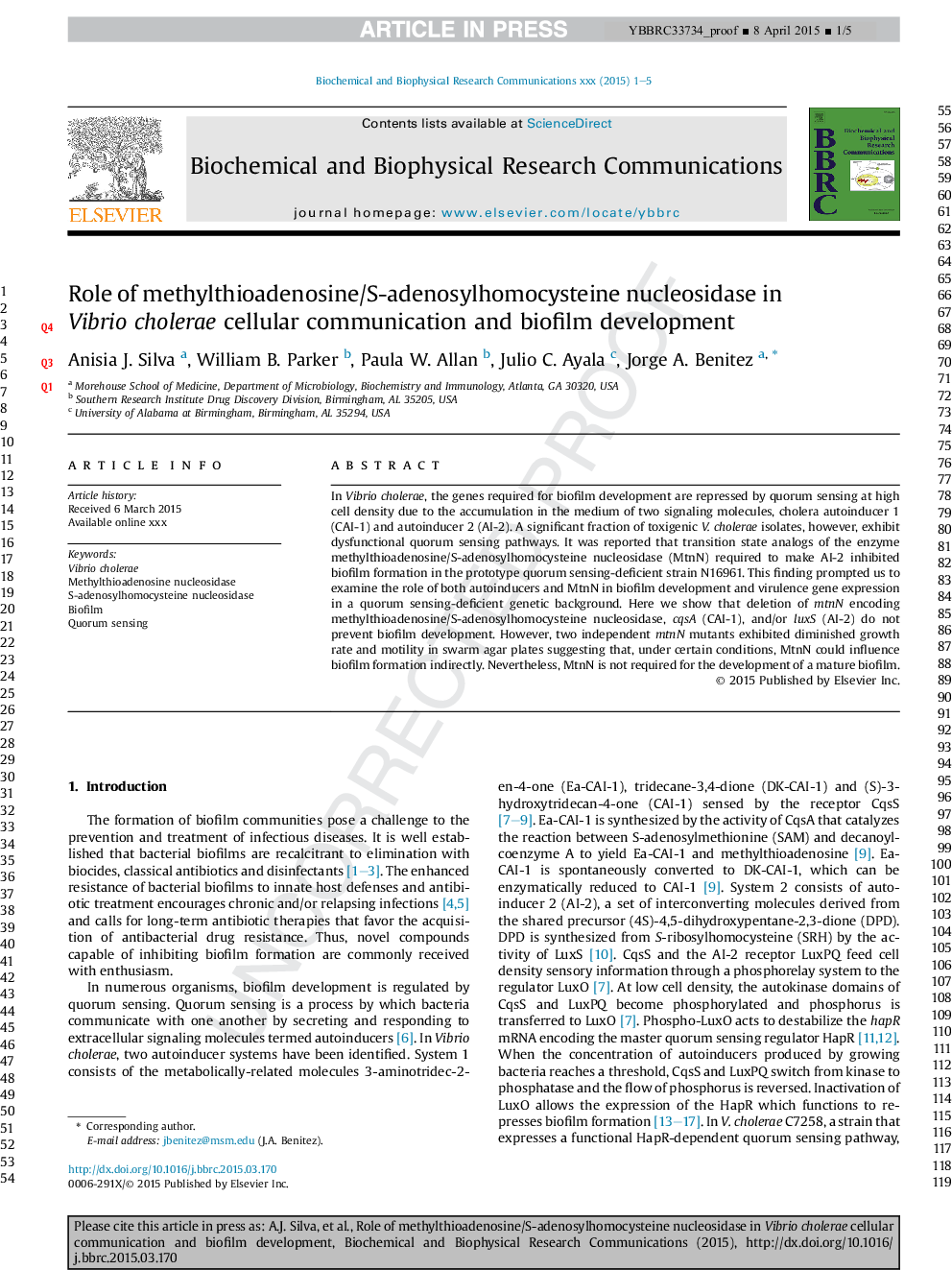| Article ID | Journal | Published Year | Pages | File Type |
|---|---|---|---|---|
| 10751594 | Biochemical and Biophysical Research Communications | 2015 | 5 Pages |
Abstract
In Vibrio cholerae, the genes required for biofilm development are repressed by quorum sensing at high cell density due to the accumulation in the medium of two signaling molecules, cholera autoinducer 1 (CAI-1) and autoinducer 2 (AI-2). A significant fraction of toxigenic V. cholerae isolates, however, exhibit dysfunctional quorum sensing pathways. It was reported that transition state analogs of the enzyme methylthioadenosine/S-adenosylhomocysteine nucleosidase (MtnN) required to make AI-2 inhibited biofilm formation in the prototype quorum sensing-deficient strain N16961. This finding prompted us to examine the role of both autoinducers and MtnN in biofilm development and virulence gene expression in a quorum sensing-deficient genetic background. Here we show that deletion of mtnN encoding methylthioadenosine/S-adenosylhomocysteine nucleosidase, cqsA (CAI-1), and/or luxS (AI-2) do not prevent biofilm development. However, two independent mtnN mutants exhibited diminished growth rate and motility in swarm agar plates suggesting that, under certain conditions, MtnN could influence biofilm formation indirectly. Nevertheless, MtnN is not required for the development of a mature biofilm.
Keywords
Related Topics
Life Sciences
Biochemistry, Genetics and Molecular Biology
Biochemistry
Authors
Anisia J. Silva, William B. Parker, Paula W. Allan, Julio C. Ayala, Jorge A. Benitez,
